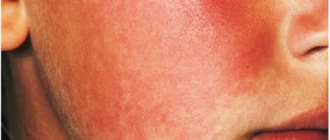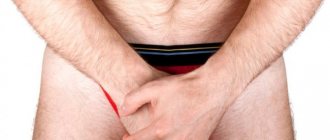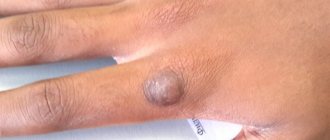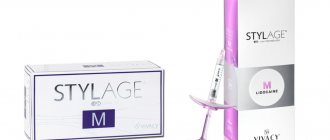Unfortunately, such a problem as inflammation on the face can occur in any person. Skin rashes can appear even in those people who carefully monitor their skin. Why do pimples appear on the face? How to prevent their occurrence?
Pimples (or blackheads, or acne) are a skin disease associated with the inflammatory process of the sebaceous glands and follicles.
The reasons for the appearance of acne on the face and not only can be various factors, but they always indicate a violation of the internal state of the body, regardless of age.
If in adolescence this is most often the result of hormonal changes during puberty, then at an older age the occurrence of acne can be triggered by hormonal imbalances that occur for various reasons:
Hormonal changes in the body
- Puberty period. This is the most common and most common cause of acne . Age-related changes in hormonal balance lead to a sharp increase in the androgen hormone in the body of adolescents during puberty. This causes an increase in the amount of sebum and its density, resulting in the formation of plugs in the hair follicles and the appearance of acne.
- Premenstrual period. In the last phase of the menstrual cycle in females, the level of steroid hormones increases, which is why some notice the appearance of acne on the face during this period.
- Pregnancy, discontinuation of birth control pills.
Hormonal disbalance
Failures in the production of sex hormones and all kinds of hormonal disorders can also cause acne. Acne can be caused by diseases of the endocrine system, for example, disorders of the adrenal glands, male and female genital organs, and pituitary gland. Polycystic ovary syndrome negatively affects ovulation and is often the cause of acne on the face. Therefore, in some cases, it is first advisable to consult a gynecologist and endocrinologist, undergo the necessary tests, and only then select suitable acne remedies.
Gastrointestinal diseases and eating errors
A common cause of acne and acne on the face is poor nutrition and disruption of the gastrointestinal tract. This can occur with dysbacteriosis, diseases of the stomach, intestines, pancreas, and gall bladder. The sebaceous glands begin to produce sebum in excess due to the consumption of large amounts of carbohydrates and the body's insufficient supply of amino acids. Gastrointestinal pathologies can also occur when food is not fully digested and many toxins are formed in the body.
Eating certain foods can cause various inflammations on the face . Pay attention to the list of products that should not be abused:
- Flour and sweet products: candies, chips, carbonated drinks, cookies, baked goods, chocolate, etc.
- Sweet coffee, which is especially not recommended to drink on an empty stomach.
- Ice cream, high-fat cheese, full-fat milk
- Nuts (almonds, peanuts, pistachios, walnuts). Despite their benefits, you should not overuse nuts.
Weakened immunity and stress
As a result of stress, the release of adrenaline increases, which in turn increases the production of the androgen hormone. And this, as we have already found out, is the cause of acne. In addition, stress impairs the functioning of the immune system, so it becomes more difficult for the body to resist environmental infections, which means the risk of acne increases significantly. Also, the appearance of rashes is influenced to a certain extent by lack of sleep.
Problematic facial skin: causes
The content of the article
Various factors can negatively affect the health of the skin. Especially often these are pathologies of internal organs, infection with fungus, herpes, staphylococcus, and the attachment of ticks. Under the influence of external factors (stress, poor diet, smoking, solar radiation) the protective function of tissues also decreases. This often manifests itself as cosmetic defects in the facial area.
To effectively deal with the problem of skin rashes, you need to establish the cause of the unpleasant symptoms. In adolescence, imperfections in the form of acne, greasiness or dryness in 90% of cases are associated with the characteristics of puberty. But after 20 years, rashes are a clear sign of health problems.
The following pathologies lead to the appearance of rashes:
- Hormonal disbalance
. In particular, excessive acne is observed with elevated testosterone levels. Acne in women can appear during certain phases of the menstrual cycle. For example, a few days before your period. - Weakening of the immune system
. Junk food, UV radiation, abuse of alcohol, tobacco, and cosmetics reduce the protective ability of Langerhans cells. - Disorders of the gastrointestinal tract.
Digestive disorders are accompanied by intoxication of the body, which is associated with stagnation of food in the stomach. Toxins accumulate in cells and are eliminated through the skin. When removing toxins, the ducts of the sebaceous glands become clogged, which causes inflammation. - Allergy
. This is a hypersensitivity reaction to an irritant, which manifests itself in rashes of various types. - Genetic predisposition
. Problems with hormones, the functioning of the sebaceous glands, and the toxic composition of sebum are often inherited.
Symptoms of inflammation of the trigeminal nerve
Experts include short-term, but acute and intense pain in different parts of the head as the main symptoms of facial neuralgia. Shooting attacks spread over the entire surface of the face - lips, eyes, nose, upper and lower jaw, gums and tongue.
Patients also report the following symptoms:
- Metallic taste in the mouth
- Muscle weakness
- 2-3 days before facial expressions are affected, pain occurs behind the outer ear, spreading to the face, back of the head and eyes
- Facial asymmetry
- Inability to close the eye on the affected side
- Drooping corner of the mouth
- Dry mouth
- Slurred speech
- Cross-eyed strabismus
- Uncontrollable tearing
- Disorders of taste buds
- Increased drooling
- Facial muscle spasms
- Increased or decreased facial sensitivity
- Temperature increase
Due to discomfort and pain, the patient begins to develop a phobia and increased anxiety. He tries to avoid poses and movements that provoke discomfort.
Signs of skin problems
Treatment of facial skin is necessary when the following symptoms appear:
- constant formation of inflammatory foci - acne, pimples, comedones;
- fat content of the upper layer of the epidermis;
- peeling of the skin on the face in men and women;
- age spots, freckles;
- hyperemia of the skin;
- itching and redness;
- blackheads, enlarged pores.
Freckles
Dark spots
Treatment of facial skin for acne and other cosmetic defects is a long process. Cosmetic procedures often turn out to be ineffective. Therefore, at the first signs of pathology, you should consult a doctor. The doctor will help determine the cause of the rash and select effective treatment methods.
Skin as an organ
Skin is the dense outer covering of a person.
It is an independent organ that performs specific functions. First of all, the skin is necessary to protect internal organs from physical, chemical and microbiological influences. In addition, the skin contains a large number of receptors that provide tactile, temperature and pain sensitivity. Damage to the integumentary tissue always increases the risk of developing an infection or inflammatory process. Diseases of internal organs can also cause skin lesions. Cover departments:
- The epidermis is the outermost part of the skin, formed by five layers of cells. The upper layer of the epidermis is represented by dead (keratinized) cells necessary for the formation of a biological barrier. The lower layers ensure the renewal of the cellular composition of the epidermis.
- The dermis is the middle layer of the skin. This is the area where smooth muscle fibers, blood vessels, nerves, glands, hair follicles and other structures are located.
- Adipose tissue is the deepest layer of the skin, mainly consisting of adipose tissue. This section of the organ provides protection to underlying tissues from temperature changes and external physical influences.
Scientists include external respiration, water-salt regulation, vitamin D formation and blood deposition as additional functions of the skin. The structure of the skin differs in different parts of the body. Thus, the thicker skin of the soles of the feet does not contain hair follicles. Nails, which are derivatives of the skin, form at the tips of the fingers. Also, different areas of the skin differ in the number of sweat and sebaceous glands.
Hyperkeratosis of the facial skin: what it is and treatment
Hyperkeratosis is a thickening of the stratum corneum of the epidermis, as a result of disruption of the processes of cell division and desquamation of dead particles. With this disease, bumpy facial skin, dehydrated areas, and severe peeling are observed. Hyperkeratosis often develops as a concomitant pathology of the underlying disease:
- diabetes;
- psoriasis;
- lack of vitamins, minerals;
- fungal infection.
Therapeutic tactics are aimed at eliminating the underlying disease. Moisturizing creams, chemical peeling procedures, and mesotherapy are used as symptomatic remedies. Cryotherapy and microdermabrasion are also effective.
Drugs that increase the exfoliating ability of cells demonstrate effectiveness. This group of medications includes ointments based on retinoids. In case of severe inflammation, non-steroidal drugs are prescribed to relieve hyperemia and itching. To boost immunity and improve overall well-being, it is recommended to take vitamins.
Inexpensive but effective
However, you should not immediately resort to the strongest drugs. You can get by with easier means.
Clay
For example, cosmetic clay is excellent for ridding the skin of acne; it cleanses pores well and nourishes the skin.
Clay is an excellent natural adsorbent.
Blue and white clay are best suited for this purpose. It is enough to apply clay masks to your skin 2-3 times a week, and within a month you will see the results from their use.
Badyagi powder is an effective remedy in the fight against acne. Dilute it with water to a paste and apply it to your face for 15 minutes. Repeat once a week.
Hydrogen peroxide
Hydrogen peroxide is a great helper for cleansing the skin and treating acne. It disinfects the skin, draws dirt out of the pores, and prevents the development of bacteria in them that cause inflammation. Peroxide is effective for purulent acne. Before use, dilute a 3% hydrogen peroxide solution with boiled water in a 1:1 ratio. Wipe the skin with a cotton swab soaked in diluted peroxide. Or use it spot on.
Acetylsalicylic acid
Acetylsalicylic acid (aspirin) occupies an important place in cosmetology. Recently, aspirin skin peeling has become popular. Crush several aspirin tablets, dilute them with water to a paste, then apply the resulting mixture to your face. Rub your face lightly to remove dead skin cells. Such a cheap and simple remedy will help even out the skin and stop the inflammatory process.
Activated carbon
Activated carbon has proven itself to be an excellent adsorbent for skin. Masks made from it give visible results immediately after the first use. To prepare this miracle mask, dilute 1 tbsp in water. spoon of gelatin, then heat it. Add several tablets of crushed activated carbon to warm gelatin. Stir everything thoroughly. Then apply the warm paste to your face and leave until the mask dries completely. Similarly, you can use a mask made from gelatin alone.
After the gelatin mask dries, remove it along with any dirt.
Dehydration of facial skin: causes and treatment
Water is a natural environment for the biochemical processes of cell division and vital activity. When there is not enough water resource, the protective ability of the skin decreases, and the risk of penetration of harmful substances and microorganisms into the epithelium increases. Therefore, imperfections and dermatological defects may appear in the facial area. People with any type of epithelium (oily, dry, combination) can suffer from dehydration.
Dehydrated skin
Signs of dehydration of the epidermis:
- dullness of the skin;
- deepening existing wrinkles and facial furrows;
- constant feeling of dryness;
- peeling, areas of irritation;
- decreased elasticity of the epidermis;
- constant feeling of tightness;
- coarsening of the epidermis;
- small rashes on the nose, forehead, chin.
Under the influence of external factors and metabolic disorders, the epidermis loses its ability to retain moisture. At the same time, the acid-base balance changes and collagen production decreases. However, a violation of the water balance is a temporary problem, after which the external defects disappear. Treatment of facial skin dehydration is based on eliminating the provoking factor or underlying disease associated with metabolic disorders.
The problem of dehydration can be partially solved with the help of cosmetic care, which is selected by a doctor. Care cosmetics should contain fruit extracts, linoleic acid, vegetable oils, and vitamins. If the skin is dehydrated, the use of peeling scrubs, soaps, and products containing alcohol, collagen, and fatty acids is contraindicated. The doctor will most likely prescribe masks, steam baths with extracts of medicinal herbs - chamomile, St. John's wort, lemon balm, eucalyptus. To restore water balance, it is necessary to follow a drinking regime and a diet enriched with vitamins C, B, E.
Diagnostics
To undergo the examination, you must make an appointment with a dermatologist. The doctor will ask the patient about complaints and study medical history to identify risk factors for the disease. The next stage of diagnosis is an initial examination of damaged skin. The dermatologist evaluates the shape and size of the ulcers, and also determines the depth of tissue damage. To clarify the cause of pyoderma and the severity of the patient’s condition, instrumental and laboratory examinations are prescribed.
Additional diagnostic methods:
- Dermatoscopy is a method of visual examination of areas of tissue damage. To determine the type of disease, the doctor uses an optical or digital device that allows you to repeatedly enlarge the image (photo). Dermatoscopy is used to search for specific signs of different types of pyoderma and differential diagnosis.
- Microbiological examination of the contents of blisters, boils and other pathological structures. The doctor carefully punctures the membrane of the bladder and collects the exudate in a sterile container. In the laboratory, specialists inoculate the material on various nutrient media to identify the causative agent of the disease. After specifying the type of causative agent of dermatitis, specialists conduct a test for the sensitivity of microorganisms to antibiotics. Bacterial culture is the most reliable way to diagnose the infectious form of the disease.
- Blood analysis. In the treatment room, a nurse collects venous blood and sends the material to the laboratory. First of all, specialists evaluate the ratio and quantity of blood cells. An immunological test can detect signs of an autoimmune disease. Also, if necessary, serological diagnostics are carried out: specialists look in the blood for specific antibodies produced by the body in response to infection. It is often necessary to exclude a sexually transmitted infection.
In case of nonspecific symptoms, the doctor must exclude the presence of other diseases with similar symptoms. For this purpose, differential diagnosis of toxicerma, epidermolysis bullosa, pemphigus vegetans and fungal skin lesions is carried out. The presence of HIV infection is excluded. If necessary, a consultation with an immunologist, allergist, rheumatologist and infectious disease specialist is scheduled.
Rosacea of the facial skin: treatment
Rosacea or rosacea is a chronic inflammatory disease of a non-infectious nature. The pathology is associated with a violation of the tone of blood vessels in the upper layer of the epidermis. As a result, persistent foci of inflammation are formed - acne, ulcers, areas of pronounced redness. Pathology develops especially often in older women and men, usually after 40 years.
Facial rosacea
Medicine knows more than 10 types of rosacea - persistent edema, granulomatosis, fibrous lesions, etc. The disease begins with the periodic appearance of erythema (redness), which disappears after a few hours. Next, the choroid plexuses become visible, a bluish color, papules, and pustules appear. At the last stage, fibrous tissue grows and the oval is deformed.
Doctors take a comprehensive approach to the treatment of rosacea, prescribing effective medications and personal recommendations for caring for the facial area. The following groups of drugs are used:
- Medicinal gels, creams, ointments containing metronidazole, anti-inflammatory, antiparasitic components;
- Antihistamines - to relieve severe inflammation and allergies;
- Vitamins that strengthen the walls of blood vessels;
- Antibiotics - used in case of secondary infection.
Doctors recommend following a diet during treatment and rehabilitation. You should avoid fast food, alcohol, salty, smoked, fried foods, and coffee. It is important to minimize the influence of possible irritants - solar radiation, frosty air, dry wind. Daily care products should not contain fatty acids, alcohol, acetone, or hormonal additives. To treat facial skin in later stages, cryodestruction, laser therapy, and electrocoagulation are used. These procedures help eliminate dilated vascular networks.
Demodex: facial skin treatment
Demodicosis develops as a result of tissue infection by a subcutaneous mite that lives in the sebaceous glands. The parasite causes disruption of the morphological structure of the skin and the immune status of a person. Infection with Demodex is one of the factors provoking rosacea, seborrheic dermatitis, and acne.
Demodicosis is accompanied by the following symptoms:
- elements of rashes - ulcers, acne, papules;
- continuous hyperemia;
- pale gray color;
- enlarged pores, excessive sebum secretion;
- greasy shine in the light;
- itching, peeling;
- inflammation of the conjunctiva;
- general swelling.
Acne on the face
Treatment of micro-mites under the skin of the face requires an integrated approach with local and general medications. The basis of treatment is antibacterial drugs and agents that reduce sebum production. For local therapy, antiparasitic ointments, gels, and shampoos are used, which disrupt the functioning of the Demodex nervous system.
During the treatment of demodicosis, doctors recommend:
- clean the facial area only with medications prescribed by the doctor or thermal water;
- use dry wipes instead of towels;
- Avoid mechanical removal of pimples and ulcers;
- give up decorative cosmetics, get rid of the products you used before your illness;
- exclude alcoholic drinks and smoking;
- use pillows and blankets with synthetic filling;
- Avoid solariums and sunbathing on the beach.
Pore cleansing
To give up smoking
A diet that limits the amount of carbohydrates and fats alleviates unpleasant symptoms. Lack of fat reduces sebum production, that is, it limits favorable conditions for the parasite. You should avoid spicy foods, fried, salty, smoked foods, and sausages. It is better to boil or steam the permitted foods.
Causes
Neutral, opportunistic and pathogenic microorganisms are constantly present on human skin. These are fungi and bacteria that do not penetrate deep tissues and do not provoke the development of infection. The constancy of the microflora of the skin and the inhibition of the vital activity of microorganisms allows maintaining the integrity of tissues. Weakening of the body's defense systems can provoke the proliferation of pathogenic and opportunistic microorganisms with damage to various layers of the skin. In some cases, ulcers are not associated with infection.
The main mechanism of pyoderma formation is due to the infectious process. Pathogenic bacteria begin to actively multiply and produce toxins that damage the skin. The immune system immediately begins to fight the infection by activating inflammatory processes and protective cells. The release of inflammatory mediators leads to even greater damage to the skin. Destroyed cells and dead microorganisms form purulent exudate that accumulates in various cavities.
Possible causes of the disease:
- Damage to integumentary tissues due to cuts, combing, as well as chemical and thermal exposure. Violation of the integrity of the epidermis causes the penetration of pathogenic microorganisms into less protected areas of the skin. In addition, cuts and burns themselves cause an inflammatory response.
- Disruption of the body's defense systems. In some cases, immune cells begin to attack healthy tissue. The most severe form of autoimmune damage to integumentary tissues is pyoderma gangrenosum. In addition, allergic and autoimmune processes increase the risk of tissue infection.
- Penetration of parasites into the skin. This is a rare variant of the etiology of the disease. Parasitic invasion can also lead to a purulent-inflammatory process.
Clarifying the cause of the disease is necessary to select a treatment method and prevent relapses.
Oily facial skin: causes and treatment
Oily facial skin is associated with excessive activity of the sebaceous glands. This type of skin requires systematic care, otherwise acne, ulcers, and comedones appear. First, skin defects appear on the forehead, chin, cheeks, and then throughout the facial area. After healing, scars, scars, and rough bumps form at the site of the inflammatory foci. The skin takes on a dull blue or gray tint.
Often, disruption of the sebaceous glands is associated with a genetic factor. However, there are other reasons for excess oiliness of the skin:
- hormonal imbalance;
- abuse of fatty foods;
- low-quality cosmetics;
- violation of autonomic function;
- gastrointestinal diseases;
- neuropsychological tension;
- endocrine pathologies.
In fact, oily skin type does not require treatment, but proper care (if the problem is not caused by a primary disease).
Dry skin on the face: causes and treatment
Dry tissue occurs when there is insufficient sebum secretion. In medicine, this phenomenon is called xerosis. The causes of dryness can be different:
- genetic predisposition (dry skin from birth);
- dermatological diseases - atopic and allergic dermatitis, eczema, psoriasis, neurodermatitis;
- deficiency of vitamins and minerals in the body;
- unhealthy diet, bad habits;
- stress, neuro-emotional tension;
- dehydration;
- use of low-quality or inappropriate cosmetics;
- living in a dry climate;
- aggressive exposure to sunlight;
- diseases of internal organs - renal and liver failure, hypovitaminosis, blood diseases, oncological processes, hypothyroidism.
Treatment is carried out comprehensively, after identifying the main cause of tissue dryness. If necessary, the doctor prescribes medications, moisturizing creams and ointments, and gives recommendations for lifestyle correction.
Prevention of acne and pimples
Prevention of acne and pimples includes proper balanced nutrition, diet, and regular skin care. During the period of greatest activity of the sebaceous glands (especially in adolescence and youth), exclude fatty foods rich in simple carbohydrates, sweets, and starchy foods from your diet. Alcohol and cigarette consumption also affect skin condition. Therefore, they should also be abandoned. In addition, do not forget about regular cleansing of your skin. Use antiseptic masks and creams.
Do not squeeze blackheads and pimples. By doing this, you can provoke even more of their appearance and the appearance of scars and scars.
These simple rules will help keep your skin pores clean and prevent dust and bacteria from getting into them, which contribute to the development of inflammation.
Seborrheic dermatitis of the facial skin: treatment and diagnosis
Seborrheic dermatitis is an inflammatory skin disease that develops as a result of the activity of a fungus of the Malassezia genus. Sebum becomes a favorable environment for fungal activity. In this regard, the pathology is especially common in people with oily skin.
The disease develops gradually. The first symptoms are yellowish-red scaly spots and blistering rashes. Dense crusts, skin defects and cracks may form on the scalp.
Treatment of seborrheic dermatitis is carried out in the following areas:
- Dieting.
Eating fatty, sweet, or too spicy foods provokes excess secretion of sebum. This creates a favorable environment for fungal activity. - Drug therapy .
The patient may be prescribed antimicrobial drugs in the form of tablets. To strengthen the immune system, vitamin and mineral complexes and immunostimulants are used. Sometimes hormone therapy is used. - External means.
A dermatologist must prescribe external agents in the form of ointments, creams, and aerosols. Their action is aimed at destroying the Malassezia fungus.
Drug treatment
Timely therapy allows you to get rid of unpleasant symptoms and restore skin health.
Diagnosis of inflammation of the trigeminal nerve
Depending on the affected area and the set of symptoms, the strategy for diagnosing the disease is determined. To determine the location of nerve damage, the severity and dynamics of recovery, doctors prescribe a hardware diagnostic method, for example, electromyography. MRI and CT scans are used to determine the presence of tumors in the brain.
The patient may also be referred for a general or biochemical blood test, x-ray of the lungs, ultrasound of soft tissues or ophthalmoscopy.
You can be confident in the quality of the procedures performed in the clinic and the high accuracy of the results of MRI, CT and other methods of diagnosing various diseases. Medunion performs magnetic resonance imaging of all types: head, spine, abdominal cavity and joints using modern equipment.











